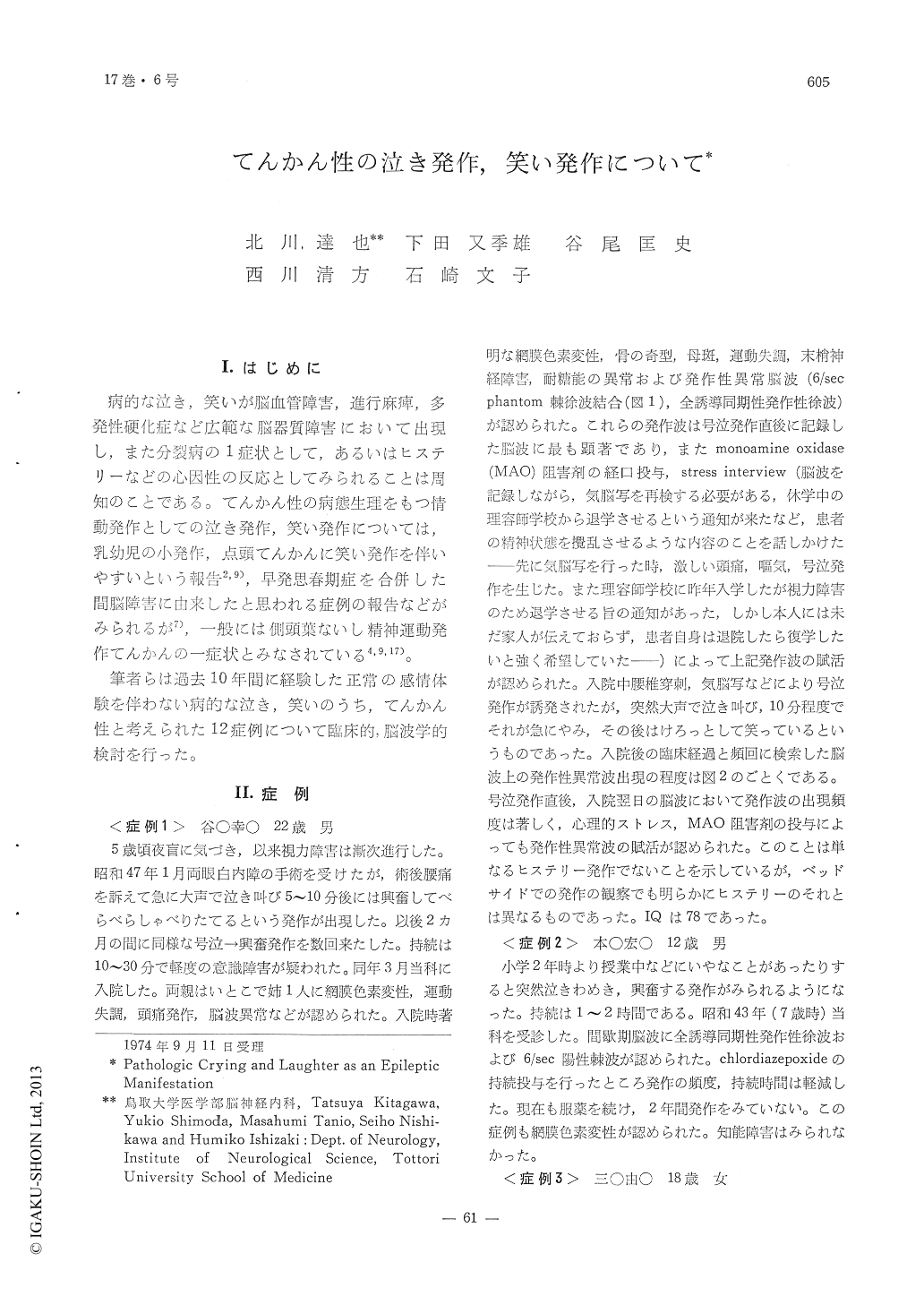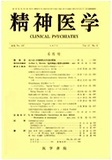Japanese
English
- 有料閲覧
- Abstract 文献概要
- 1ページ目 Look Inside
I.はじめに
病的な泣き,笑いが脳血管障害,進行麻痺,多発性硬化症など広範な脳器質障害において出現し,また分裂病の1症状として,あるいはヒステリーなどの心因性の反応としてみられることは周知のことである。てんかん性の病態生理をもつ情動発作としての泣き発作,笑い発作については,乳幼児の小発作,点頭てんかんに笑い発作を伴いやすいという報告2,9),早発思春期症を合併した間脳障害に由来したと思われる症例の報告などがみられるが7),一般には側頭葉ないし精神運動発作てんかんの一症状とみなされている4,9,17)。
筆者らは過去10年間に経験した正常の感情体験を伴わない病的な泣き,笑いのうち,てんかん性と考えられた12症例について臨床的,脳波学的検討を行った。
In the last decade we have encountered 12 patients with pathological crying or laughter of epileptic nature. Clinically and electroencephalographically we devided them into three groups as follows: 1) diencephalic or mesencephalic seizure (5 patients), 2) temporal lobe psychomotor epilepsy (5 patients), 3) crying or laughter appeared at postictal period of grand mal or petit mal epilepsy (2 patients).
Two of 5 patients with diencephalic or mesencephalic seizure were accompanied with retinitis pigmentosa. Crying and laughter as diencephalic or mesencephalic seizure had a tendency to be precipitated by emotional tension or anxiety. In patients with diencephalic seizure, disturbance of consciousness was almost negative, and they had emotional experiences corresponding to crying or laughter. Paroxysmal EEG activities, 6/sec spike and wave phantom, 6/sec positive spikes or/and bilaterally synchronous slow wave bursts, were found in them.
In patients with temporal lobe psychomotor epilepsy, there was absence of external precipitants. Out of 5 patients with the epilepsy, two were pseudoaffective and other three were amnestic for the seizure. Temporal focal spikes or slow waves in EEGs were found in four of the 5 patients. Both minor tranquilizer and phenobarbital were effective to the patients with diencephalic or mesencephalic seizure, and anticonvulsants, phenobarbital, diphenylhydantoin and carbamazepine proved to be effective to the patients with temporal lobe psychomotor epilepsy.
In two patients with diencephalic or mesencephalic seizure EEG-recordings were carried out during or just after their seizure, and relationship between clinical seizure and 6/sec spike and wave phantom was found. In a patients with retinitis pigmentosa, bilaterally synchronous slow wave bursts and 6/sec spike and wave phantom were activated by oral administration of monoamine-oxidase-inhibitor and emotional stress. A brief discussion was made about a certain connection with paroxysmal EEG activity, affective seizure, emotional stress and varying amine levels of the brain stem.

Copyright © 1975, Igaku-Shoin Ltd. All rights reserved.


